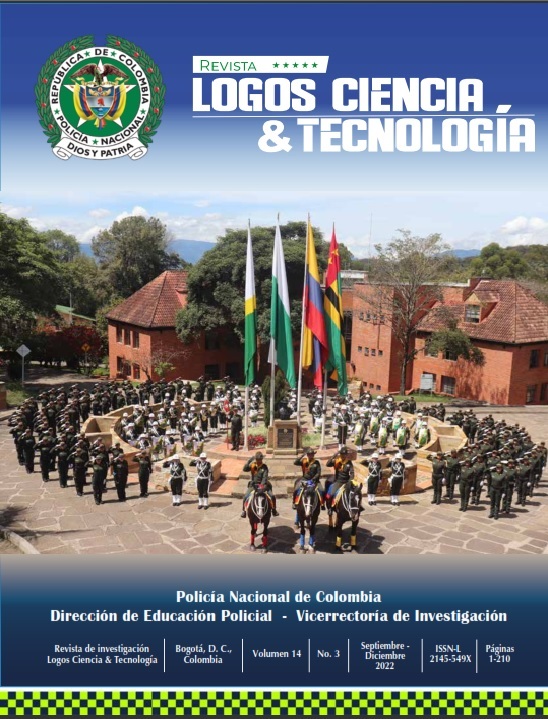Stimation of friction coefficients of vehicles on surfaces using drones - Unmanned Aircraft Systems
DOI:
https://doi.org/10.22335/rlct.v14i3.1646Keywords:
drone, accelerometer, accident, deceleration, coefficientAbstract
Within the methodological process carried out in the reconstruction of traffic accidents, it is necessary to determine the coefficients of deceleration or friction to be used, depending on the case, to objectively establish the traffic speeds of the vehicles involved, taking into account: the type of vehicle, surface and geometry of the roadway and its condition; To this end, researchers in the field have carried out experiments since the 1970s in order to establish these coefficients for various situations. The most commonly used methods take up the statistical analysis of data obtained through measurements made in the field, technological tools such as digital accelerometers or images processed with video cameras. The purpose of this work was to demonstrate that the accuracy of the data obtained from the video images taken by a DJI Mavic Pro Unmanned Aerial Vehicle and processed in Tracker ® educational software can be compared with the information recorded with a VC4000 digital accelerometer, being The first solution is an option with a rationally lower cost, with a rate of obtaining information that is higher than the second, and with a versatility to execute scenarios that is notoriously superior.
Downloads
References
Álvarez, D. M., y Luque, P. R. (2007). Investigación de accidentes de tráfico: manual de reconstrucción. Netbiblo.
Bajer, J. J. (1969). Proposal for a Procedure for Evaluating Wet Skid Resistance of a Road-Tire-Vehicle System. SAE Technical Paper 690526. Warrendale. SAE International. https://doi.org/10.4271/690526
Bartlett, W., y Wright, W. (2010). Braking on Dry Pavement An Gravel With an Without ABS. SAE International.
Bartlett, W., Robar, N., y Baxter, A. (2007). Motorcycle Braking Tests: IPTM data through 2006. Accident Reconstruction Journal, 17(4).
Davisson, J. A. (1969). Design and Application of Commercial Type Tires. Warrendale. SAE International. https://doi.org/10.4271/880001
Dà-Jiāng Innovations DJI. (2022, 14 de junio). DJI Mavic Pro. https://www.dji.com/mavic
Franco, R. S., Miranda, V. S., Dutra, R. S., y Ribeiro, L. C. (2021). What if the surface is rough? A study on the influence of the friction force in inelastic collisions through video analysis. Artigos Gerais: Revista brasilera de enseñanza de física. https://doi.org/10.1590/1806-9126-RBEF-2020-0528
Fricke, L. B., y Baker, J. S. (1990). Drag Factor an Coefficient of Frictión in Traffic Accident Reconstruction. Northwestern University Traffic Institute.
González, A., Amarillo, G., Amarillo, M., y Sarmiento, F. (2016). Drones aplicados a la Agricultura de Precisión. Revista Especializada en Ingeniería Universidad Nacional Abierta y a Distancia, 10, 23-37. https://doi.org/10.22490/25394088.1585
González, R. H., Ucan, J. N., Sánchez y Pinto, I., Medina, R. E., Arcega, F. C., Zetina, C. M., y Casares, R. S. (2019). Drones. Aplicaciones en Ingeniería Civil y Geociencias. Asociación Interciencia, 44(6), 326-331.
Goodenow, G. L., Kolhoff, G. L., y Smithson, F. D. (1968). Tire-road Friction Measuring System: A Second Generation. SAE Transactions, 77, 571–579. http://www.jstor.org/stable/44565085.
Hugemann, W., y Lange, F. (1993). Braking performance of motorcyclists. SAE International.
Hurtado, R. V., Villota, Y. N., Florez, D., y Carrillo, H. (2018). Video analysis-based estimation of bearing friction factors. European Journal of Physics, 39(6), 065807. https://doi.org/10.1088/1361-6404/aadda7
Lenz, J. A., Cortez, N., y Bezerra, A. (2014). Utilização de TIC para o estudo do movimento: alguns experimentos didáticos com o software Tracker. Journal of interdisciplinary Studies on Science and Informatics, 2(2), 24-34. https://doi.org/10.5752/P.2316-9451.2014v2n2p24
N.C. Department of Transportation. (2017). Collision Scene Reconstruction & Investigation using Unmanned Aircraft System. North Carolina Department of Transportation.
Ramesh, P. S. y Muruga Lal Jeyan, J. V. (2020). Comparative analysis of the impact of operating parameters on military and civil applications of mini unmanned aerial vehicle (UAV). AIP Conference Proceedings 2311, 030034.
Remolina Caviedes, E. E., Baena, A. J., y Higuera Cruz, J. F. (2019). Procedimiento para la estimación del coeficiente de fricción neumático-vía. Revista Logos Ciencia & Tecnología, 12(1), 71-83. https://doi.org/10.22335/rlct.v12i1.1031
Rivers, R. W. (2006). Evidence in Traffic Crash Investigation and Reconstruction. Charles C. Thomas.
Society of Automotive Engineers [SAE]. (1965 Canceled 2018). Passenger Car Tire Performance Requirements and Test Procedures J918A_196601. SAE International.
Warner, C. Y., Smith, G. C., James, M. B., y Germane, G. J. (1983). Friction Applications in Accident Reconstruction. SAE International.
Downloads
Additional Files
Published
Versions
- 2022-12-10 (4)
- 2022-11-28 (3)
- 2022-11-28 (2)
- 2022-10-10 (1)
Issue
Section
License
Copyright (c) 2022 Revista Logos Ciencia & Tecnología

This work is licensed under a Creative Commons Attribution 4.0 International License.
This journal provides free and immediate access to its content (https://creativecommons.org/licenses/by/4.0/legalcode#languages), under the principle that making research available to the public free of charge supports greater global knowledge exchange. This means that the authors transfer the Copyrights to the journal, so that the material can be copied and distributed by any means, as long as the authors’ recognition is maintained, and the articles are not commercially used or modified in any way.
































